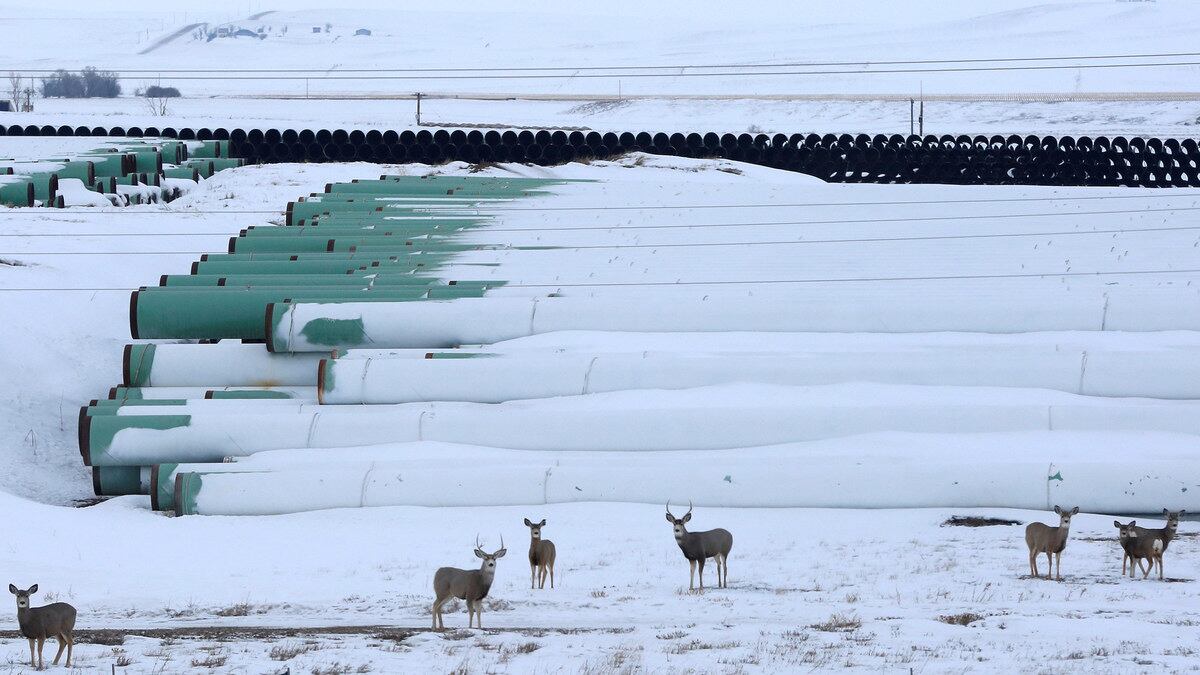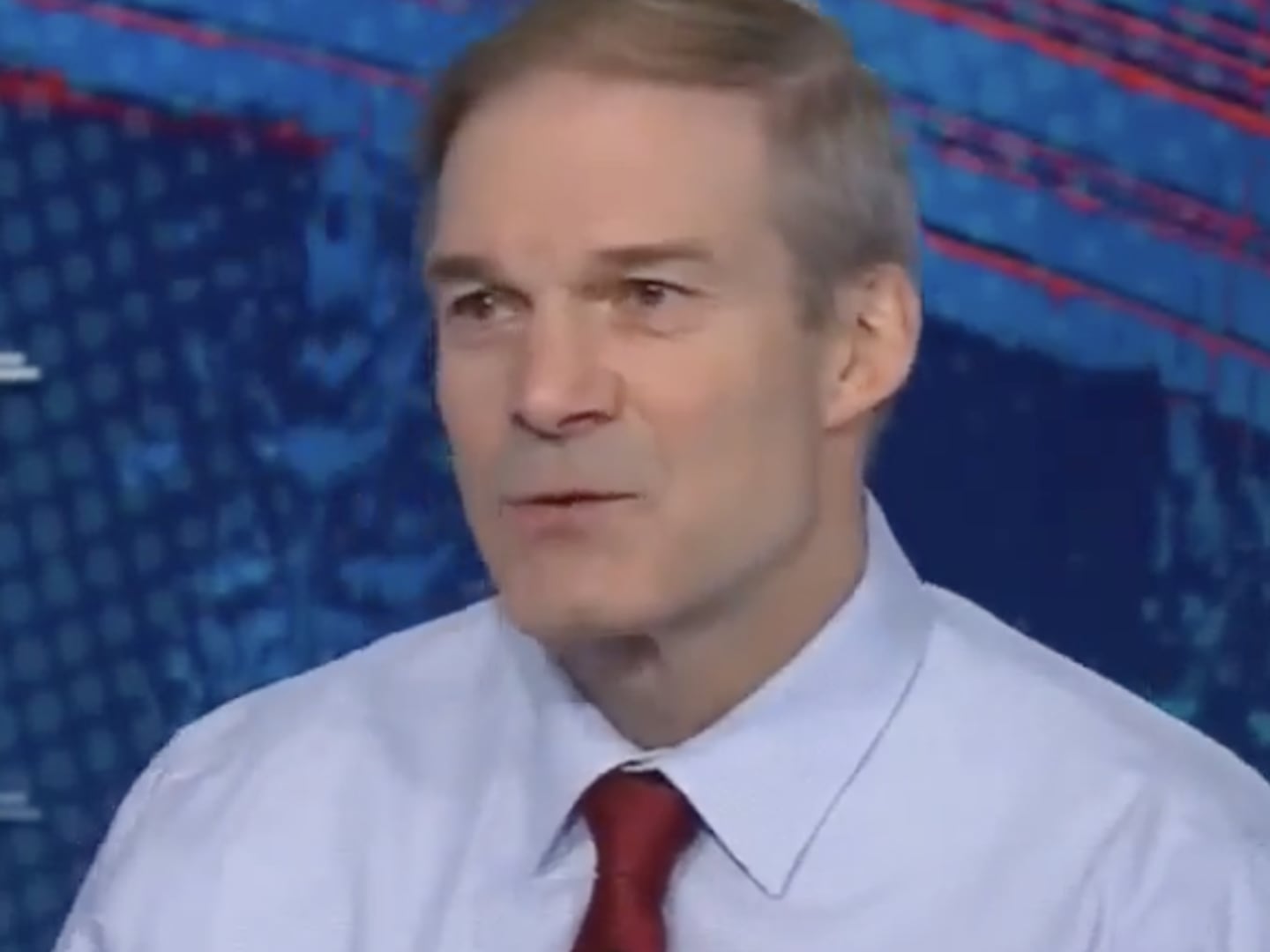A coyote trots along a lush, green clearing near the town of Fort McMurray, Canada. It is brazenly undeterred by the presence of humans. Sniffing the grasses still wet with rain on an overcast summer day, it pauses at the edge of a wide expanse of thick, dark sludge. The air here is harsh with chemicals that rise off the muck—they burn the mouth and throat, almost like being on the outskirts of a tear gas cloud.
These are the Athabasca tar sands, the result of open-pit mining of bitumen and crude oil. The boreal forest that stood here for millennia was razed to allow miners to dredge up the natural resources that form the backbone of the region’s oil industry, creating vast, black pits in its place. Heavy machinery used in this process sits empty on a Saturday, and a huge smokestack spewing gray smog in the distance is the only indication of industrial activity.
The coyote surveils the slick, toxic swamp that splits the landscape; as if wondering how this smelly mess came to be there, in the center of what would have been its natural habitat a few decades ago. Then it disappears into the bush.
Cleo Reece watches it go, smiling.
“Look at that,” she says. “They aren’t usually so fearless around people. With everybody mostly staying home for the past couple of months because of COVID, the animals around here are getting braver.”
Reece, 72, is a member of the Fort McMurray Cree First Nation, one of several indigenous tribes that call this area their ancestral homeland. She co-chairs Keepers of the Athabasca, an environmental organization dedicated to preserving the waters of the Athabasca River, which snakes across 765 miles of northwestern Canada before spilling into the Athabasca Lake. Like many indigenous people in the region, Reece is deeply worried about the impact of the oil industry on local land, air and water, and has spent much of her life trying to hold it accountable.
Environmental concerns about the Alberta oil sands, which support a multibillion-dollar industry made up of an amalgamation of entities including Syncrude, Suncor and, most recently, the Saudi Arabian government, may seem distant and unrelated to turbulent events in the United States. But they are currently at the nexus of a highly controversial issue that has become increasingly politicized in America in recent months—the Keystone XL pipeline, a project spearheaded by the company TransCanada Energy, which is meant to carry synthetic crude oil and bitumen from Alberta across the U.S.-Canadian border, all the way to Steele City, Nebraska.
Opposition to the Keystone XL pipeline dates back to when the project was first proposed in 2008 as an extension of the original Keystone pipeline, which was completed in 2014. Arguing against the Keystone XL, activists and indigenous tribes across North America cite longstanding environmental damage caused by the original pipeline, which has had 12 significant oil spills since it was first built. The most recent incident was in October 2019, when the pipeline leaked 383,000 gallons of oil in North Dakota’s largest oil spill ever, causing untold damage to the ecosystem.
In February 2015, after years of protests and lengthy court battles in both the United States and Canada, former President Obama finally vetoed a Senate bill meant to approve the American portion of the pipeline. That seemed like the end of the saga around this controversial project—until, all too predictably, President Donald Trump reversed the Obama decision in March 2017, soon after his inauguration.
"It's a great day for jobs and energy independence," Trump said, calling the pipeline "the greatest technology known to man or woman."
The Keystone XL has become no less controversial in the years since. Environmental activists continue to fight the pipeline in court. A judge in Montana canceled a construction permit in April, and On May 18, Democratic presidential nominee and former Vice-President Joe Biden issued a formal statement vowing to scrap Keystone XL if he is elected president, calling the project “tar sands we don’t need.”
“Stopping Keystone was the right decision [under the Obama administration] and it’s still the right decision now,” said the Biden campaign’s policy director, who accused Trump and his allies of “using the coronavirus pandemic as cover for a stealth attack on environmental protections that keep us safe.”
Despite these setbacks, TransCanada recently secured multibillion-dollar loans from the province of Alberta and the U.S. federal government. Using these funds, the corporation began construction on the pipeline in April 2020, well into the COVID-19 pandemic’s rampage across the globe. Since oil workers have been deemed essential by both Canada and the U.S., those building the pipeline are exempt from the continued border closure, prompting concerns about potential transmission of the virus.
Far from heeding legal requests to halt construction of the pipeline due to the pandemic, in April, TransCanada’s CEO Russ Girling openly cited COVID-19 as a key component of the corporation’s plan to accelerate construction. Not long afterward, the Alberta government’s energy minister, Sonya Savage, publicly celebrated the pandemic as an opportunity to push the project through at a time when large public gatherings are not permitted.
“Now is a great time to be building a pipeline, because you can’t have protests of more than 15 people,” Savage said on a local podcast. “Let’s get it built.”
Indeed, a global tragedy seems to be providing the Keystone XL project with a moment of promise. The North America oil and gas industry is enjoying massive rollbacks of environmental regulations, cited as necessary to cut costs and stimulate the economic benefits these companies provide during a recession caused by the pandemic. On June 4, Trump signed an executive order instructing federal agencies to waive longstanding environmental laws and speed up approval of projects like the Keystone XL.
Yet all this is happening just as the global oil market experiences a sharp decline in profitability, with oil prices actually going negative at the end of April due to overproduction and low demand at the peak of the pandemic. In the face of what may be an accelerated shift from fossil fuels to renewable energy, and the uncertainty of the economic stimulus that can be provided by oil infrastructure in the foreseeable future, the Keystone XL stands as a symbol of the questions surrounding the long-term sustainability and ethical issues of the fossil fuel industry writ large. As obstacles to the project continue to mount, the question now seems to be why the pipeline is still pushed forward relentlessly by corporate and political forces—and at what cost?
PANDEMIC SPREAD
Like most oil regions, Alberta is greatly dependent on transient workers who fly in and out of the area. Many reside in temporary “man-camps” hastily constructed to house them as they maintain and build oil infrastructure. Oil man-camps have a long and problematic history with indigenous people on both sides of the border. Widely blamed for the abnormally high number of rape and missing persons cases involving Native American women in places like Montana and North Dakota, these settlements are also notorious hotspots for violent and drug-related crimes. In June 2019, an official report by the Canadian government on missing and murdered indigenous women found a clear correlation between resource extraction, including the oil industry, and violence against Native women.
At the peak of the pandemic in April, the man-camps became a concern in rural oil regions of both Canada and the U.S. for another reason: their potential to spread COVID-19 to local and indigenous communities. Native tribes were particularly outspoken about the health risks posed by oil workers’ continued cross-border travel, deemed essential to work on Keystone XL.
History proves that indigenous people face much higher risks during epidemics, and with deadly consequences. Native populations are rife with health and social problems that make it much more likely for the novel coronavirus to spread fast and be fatal. Crowded living quarters due to poor housing conditions, and the overall toll of grinding poverty on the human body heighten vulnerability. In 2009-2010, death rates among Native Americans from H1N1, or Swine Flu, were four times higher than in all other racial and ethnic groups combined. The Navajo nation in New Mexico currently has more than 6,747 positive coronavirus cases. In May, its per capita infection rate surpassed that of New York State.
For many indigenous people, the COVID-19 pandemic is eerily reminiscent of a long, traumatic history battling foreign diseases, from smallpox carried in by the original colonists of the Americas to the Spanish flu epidemic of 1918. François Paulette, a regal, elderly man who speaks slowly, in the manner of someone accustomed to dispensing wisdom, remembers a long tradition of cautionary tales about deadly epidemics. His people are known as the Dene Suline, and Paulette is also a member of the Smith’s Landing Treaty 8 First Nation, an independent indigenous government. A respected elder in Canada’s aboriginal community, Paulette was once the youngest chief elected in the Northwest Territories. On a Zoom call, he describes the deep, visceral fear Natives have of contagious illnesses.
“The stories go that when the Spanish Flu hit us up here in this beautiful land that I live in, it was said that some of our people moved to islands, and no other people would come to the islands,” says Paulette. “The hunters left food on the mainland and others went to get the food, so they had these measures laid out—no contact, and I look at that today, and then I look at the Americans. They don't have discipline.”
The United States has had by far the most coronavirus cases and most COVID-19 deaths in the world, and those numbers continue to rise in many states, so there is good reason for rural and indigenous communities in Canada to be wary of the cross-border travelers who work in the Alberta oil sands. In May, a COVID-19 outbreak that began spreading across Canada in mid-April was traced back to Imperial Oil’s Kearl Lake facility, just north of Fort McMurray. Imperial is one of the companies that would be transporting oil through the Keystone XL pipeline. That outbreak killed two Dene elders in the nearby town of La Loche.
“There’s absolutely no doubt that the Alberta government’s decision to not close down the camps, or at least put constraints on fly-in and fly-out operations, has cost lives,” the president of the Alberta Federation of Labour, Gil McGowan, said in a public statement.
The food court of the local Fort McMurray mall, is newly reopened as one of the only places where people can gather. Some people are wearing masks, but most go without. Since coronavirus cases and deaths in Alberta are officially on the decline, the first careful steps toward normality are starting to be taken, but everyday social interactions remain stilted and awkward; no one quite knowing what the right safety protocol is.
Seated at a food court table, Cecile Callilou, a no-nonsense, grandmotherly elder of the Fort McKay First Nation, describes how her people reacted at the start of the coronavirus pandemic.
“Our leadership, which is really good, were very cautious,” says Callilou. “We ended up with security at the gates right away. We had really good communications on what to do, with curfew, all of it. They were pretty strong about that, because of the oil industry, because we're surrounded by it, we had to take extra precautions.”
Canadian First Nation concerns about the Keystone XL pipeline as a transmission point for COVID-19 are echoed by Native Americans across the border in the States. Joye Braun is a member of the Cheyenne River Sioux Tribe and community organizer for the Indigenous Environmental Network, an activist group based in Montana that was instrumental in the 2016 Standing Rock protest movement against the Dakota Access Pipeline.
“They're already bringing in all these man-camps as outside resources, not just to build the pipeline, but also pre-construction is going on right now here, where men are coming in with bulldozers, building their housing,” says Braun. “These men, we don't know where they've been. We don’t know who they’ve been in contact with.”
The Canadian Association of Petroleum Producers (CAPP), responding to inquiries for this story said, “Through the current health crisis, the oil and natural gas industry’s objective is to maintain the safe and sustainable delivery of essential oil and natural gas to Canadians and others around the world who rely on Canadian energy.”
Although TransCanada did not respond to requests for comment from The Daily Beast, on April 3 it issued a statement meant to soothe concerns around the Keystone XL’s potential to transmit COVID-19, with a long list of health protocols it said its workers would take during construction.
“Keystone XL and its prime contractor have taken proactive steps to manage the health risk and prevent the spread of the infection as we begin work in northern Montana on the first U.S. segment of the project,” the statement read. “Safety is our number one value!”
INDIGENOUS LIFE AND LAND
The Alberta tar sands are a stark reminder of the overwhelming impact the oil industry often has on indigenous people and the places they live—some of which is likely to follow the oil itself as it flows through the Keystone XL pipeline across the border. In Fort McMurray, Cleo Reece pulls up to an open gate at the mouth of a trail that leads off into the tangled woods. A Native-style metal statue of a giant long-legged bird stands next to the gate, which marks the beginning of Crane Lake Park. The Suncor oil company logo is prominently stamped into the base of the statue.
“This is where we began the healing walks that we organized,” she says. “The purpose was to bring attention to what the oil industry was doing to our land and our water.”
The process of extracting and refining the bitumen and crude oil that will eventually flow through the Keystone XL pipeline is not a simple one. First, large shovels must dig up the oil sand and load it into trucks. These large clumps of earth are then processed in crushers. After that, hot water is added to pump the material into extraction plants, where more hot water is added to this mixture of bitumen, sand, and clay in a large container. During the final part of the process, bitumen froth is produced, diluted, and refined further. The wastewater used to refine the bitumen is then stored in large tailing ponds, where it can sit for up to 30-40 years.
Although the oil sands industry insists this process has minimal impact on the environment, scientific reports investigating the effects of oil sands on groundwater in the area have been grim since 2013. More recently, a 2019 study in the Journal of the Air and Waste Management Association found that the industry was having severe effects on biodiversity, and posed a potential threat to indigenous people in the area.
As far back as 2006, a local physician, Dr. John O’Connor, ignited a furor by speaking out about the prevalence of rare cancers among the indigenous community he was treating in Fort Chipewyan, and questioning their relation to the proximity of the oil sands. Soon after, he was accused of misconduct by Health Canada and risked losing his medical license. In 2014, O’Connor briefed the U.S. Senate about the potential health impact of the tar sands during the Obama administration’s examination of the Keystone XL controversy. The same year, a collaborative study between the Athabasca Chipewyan First Nation, the Mikisew Cree First Nation and scientists from the University of Manitoba, found concerning levels of contamination due to the Alberta oil sands in food consumed by people in the area, as well as higher levels of cancer in their communities.
We drive past the gaping maw of the oil sands. Stretches of awkward-looking new growth cover areas that are in the process of being “reclaimed,” a requirement set by the government of Alberta for land abandoned as oil sites. The idea is that the corporations are responsible for returning the land to a natural state when they are finished with it; but some areas marked for reclamation are still little more than vast pools of sludge. Loud booms periodically shake the air, like the sound of mortar shells exploding.
“That’s so the birds won’t land,” Reece explains. The oil companies were “getting in trouble because all these birds would land and die on the sands,” she says, so now they fire off cannons to stop them.
She shakes her head, sadness in her striking, blue-green eyes. “It doesn’t always work.”
Finally, she pulls into an enclosure on a hill that marks the beginning of Wood Buffalo National Park, a UNESCO World Heritage Site named for the wild bison that make it their home. Even here, the chemical smell from the oil sands is blown in by the wind.
“Aren’t they special?” Reece asks as the herd of majestic animals starts a slow gallop along the fence. “The buffalo is sacred to our people… I always think, you know, it can’t be good for them to be so near to the [oil] industry.”
A report by researchers from the University of Waterloo recently found that the oil sands are not substantially contaminating Wood Buffalo National Park. But members of the indigenous community and local monitors say scientific studies of the environmental impact of oil sands usually receive much more exposure when their findings are favorable to the oil industry than when they are not.
“Certain people get contracts to do a study, and the study will come out with a report that favors industry,” says Bill Loutitt, a friendly, middle-aged man with a long, salt-and-pepper braid who is CEO of the McMurray Métis. We’re talking at the tribe’s headquarters in Fort McMurray, a cheery, disheveled little building. The tribe only recently managed to secure the funds to purchase it, and mostly because of finances from the oil industry, so Loutitt is trying to be careful with his words. He says he’s noticed a kind of carrot-and-stick game played with official environmental monitoring reports in Alberta.
“Not saying that they didn't collect the data … but they only look at data that's going to look good for the favorable, and they continue to get the contracts. If someone goes in there, does a study that brings out this other stuff, you don't get another contract. So, we started saying, ‘Well, we don't trust your data.’”
Dr. Janelle Baker, an assistant professor of anthropology at Athabasca University, has made a career studying indigenous life and land. She says the failure of oil companies to live up to the participatory, consultative relationship with indigenous people that’s supposed to happen in Canada, at least on paper, takes a mounting toll on the indigenous psyche.
“I think they feel a lot of ecological grief,” says Baker. “There’s this exhaustion with people constantly saying ‘hey, we want to hear your wisdom about the effects that this project's going to have on you,’ and then the project goes ahead and has those effects. There's the sense that no one's listening to them.”
In point of fact, indigenous people in oil areas are often left with no other financial choice but to participate in the industry. Loutitt explains that his people are trying to balance their long history of reverence for the land with the need to sustain themselves as residents of a town with only one real business worth getting into. Indigenous tribes in the region, just as in in oil-rich Native American areas of the United States, must walk a delicate line between maintaining their cultural integrity and making a living for their families.
“It's good work [in the oil industry],” says Loutitt. “I did it for 26 years with TransCanada and I loved it. It kept me occupied. It kept me out of trouble. The good thing that happens when your people get steady work is that your kids get educated…We’ve got to have meaningful work for them. So, we’ve got to figure out a way that we work with development of oil sands in the most environmentally sensitive way that we can.”
The First Nations’ complex relationship with oil is a frequent source of conflict within the indigenous community. Many members of the First Nations in Canada work in the oil industry, and some tribes have deep financial and social interests in the field. The indigenous owner of a successful oil infrastructure company involved in construction of the Keystone XL pipeline, who prefers not to be named due to professional concerns, says he dedicates himself to ensuring some portion of the profits and opportunities of the industry make their way back to helping his community thrive.
“These companies sign their environmental impact agreements, and part of that is indigenous development in business and employment,” he says. “We need money to offset social issues and train our young people.”
Several members of his family are dedicated environmental activists, but the oil infrastructure company owner says he sees no conflict between their approach to helping the indigenous community and his own. “I do what I do in the best interest of our youth, but at the same time, there's a spiritual side to me,” he says. “I believe in my heart that what I'm doing is right. I pray to the Creator to help me do it right.”
This existential tension between financial and cultural concerns is mirrored in the experience of indigenous people in oil regions on the other side of the border. Joye Braun of the Indigenous Environmental Network in Montana says she understands the predicament of Native people forced to rely on the fossil fuel industry; but sees it as the responsibility of the Canadian First Nations to do their part to fight what also poses a threat to indigenous people in America.
“All their traditional forms of making a living, being able to hunt and fish and provide for their families, they can no longer do,” says Braun. “I really feel for our northern relatives…The thing is, the Medicine Line [the U.S.-Canadian border] crossed us. We didn't cross the Medicine Line.”
Even with a certain amount of oil revenue officially set aside by the Canadian and Alberta governments to stimulate the indigenous economy, many in Fort McMurray say they haven’t seen enough trickle down to have a meaningful long-term impact on their society. At the mall food court, a friend of Reece’s, who prefers to remain anonymous because of fear of retaliation from people in the oil industry, keeps her voice down as she talks, while picking at a burrito.
“I feel like our people are being used,” she says. “We shouldn't be fighting amongst ourselves. If we don't stand up for other First Nations, who's going to stand up for us?”
DEREGULATION AND THE FUTURE
Undeterred by the project’s potential to spread COVID-19 across international borders, near-certain damage to the environment, continued legal obstacles, or indigenous opposition, TransCanada announced that it had completed construction of the Keystone XL pipeline across the U.S. border on May 27.
The corporation is likely encouraged by the fact that oil prices have already started to climb again from their plummet in April, but some economists still have doubts regarding the Keystone XL’s long-term economic viability. Even with so much financial and political investment behind the project, how essential is the Keystone XL likely to prove for North America?
“What [TransCanada] is doing is asserting a fantasy market,” says Tom Sanzillo, director of finance at the Institute for Energy Economics and Financial Analysis in Ohio. “The oil and gas industry in North America has had the keys to the kingdom for the last three and a half years. That's what happens when they get the President of the United States on their side…but you can have all the political intervention you want, and the markets are such that it will not make the Canadian oil sands profitable.”
Although the oil sands industry has rapidly cut the cost of its production in recent years, the process of extracting and transporting crude and bitumen is still expensive compared to other forms of oil and natural gas. Solving the problem posed by transportation is the primary purpose of the Keystone XL pipeline. But the glut of oil and overall lower demand for it that followed the pandemic has made the economic outlook for oil corporations in Alberta bleak.
But there are obviously many short-term reasons TransCanada would keep pouring money into construction of the Keystone XL. The investment of shareholders and the government of Alberta in the project is substantial. Powerful political interests are committed to the pipeline’s completion, and the fossil fuel industry still dominates the energy market. In addition, Dr. Robert Shum, professor at the College of Brockport in New York and a political scientist with an emphasis on energy economics, says the financial burden of oil infrastructure projects like the Keystone XL is not as high as one might think, making it worthwhile to continue them, even in a struggling oil market.
“The upfront capital costs of setting up are actually much larger than the ongoing extraction costs,” says Shum. “That's one reason why it might be surprising to people that they're not shutting things down.”
Shum brings up an oft-cited geopolitical justification for the Keystone XL: that it would reduce American reliance on foreign oil; and limit opportunities for outside entities like the Russian government and OPEC to dominate the market. But last year, the U.S. passed a historic milestone when it began exporting more petroleum than it imports. The argument that the oil sands and Keystone XL pipeline would help reduce the influence of OPEC on the market also seems less convincing, now that the Saudi Arabian government just bought a significant percentage of shares in two Alberta oil sands corporations in May.
The TransCanada website touts the potential of the Keystone XL for spurring economic growth across the continent, listing job creation, property and income tax revenue and the engagement of thousands of stakeholders in the project. But Charles Mason, Chair of Petroleum and Natural Gas Economics at the University of Wyoming, says he doesn’t think any amount of political or financial investment can make the Keystone XL more successful in the long-term.
“If you're sitting up there in northern Alberta, you have one card to play to keep your economy afloat and the tax revenues moving, and this is it,” says Mason. “So, it's not surprising to me that there would be a big political push for it, but I think, if you'll excuse the pun, it's a pipe dream.”
Mason explains that when one examines the long-term economic viability of the Keystone XL pipeline and oil infrastructure projects in general, the current socioeconomic trend of slowly shifting to more energy-efficient means of production and consumption must be taken into account. More people than ever in the U.S. are migrating to fuel-efficient vehicles, and the COVID-19 pandemic appears to have created a fundamental shift in the way the workplace is organized.
“I think the writing is probably on the wall for commuting,” says Mason. “A lot of people realize that they can do just fine through Zoom and the like. That reduces demand for gasoline, and that's going to mean lower prices for crude. It just doesn't seem like there will be enough ongoing demand at the level that would be needed to rationalize the big upfront cost.”
And yet, far from reading the writing on the on the wall, the pandemic seems to have triggered a mad dash from the fossil fuel industry and its political supporters toward governmental deregulation, ostensibly to stimulate the struggling North American economy and maintain the place of these corporations as the backbone of the energy market.
According to Kirsten Francescone, MiningWatch Canada’s program coordinator and co-author of a study published by the organization on June 2 which tracked the global trend of environmental deregulation of the mining industry, including bitumen mining, in the wake of COVID-19, this has been a major problem in Alberta oil country.
“Nineteen conditions for environmental monitoring there were eliminated,” says Francescone. “This is supposed to be temporary, but we don't really know what the temporality of these modifications of environmental regulations will actually be, and that’s a concern for the future.”
CAPP maintains that the number of regulations suspended during the pandemic were a very small percentage of the overall environmental monitoring procedures in place for the oil sands, and added that they were related to circumstances in which it would not be possible to proceed while complying with COVID-19 protocols.
“The relief granted enables industry to remain compliant while following public health orders,” said CAPP in its statement. “Alberta holds some of the highest regulatory standards in the world and operators must still continue to meet all requirements related to environmental protection.”
Indigenous people in Fort McMurray say they are alarmed by the speed at which environmental oversight of the oil sands seems to have been sacrificed since the pandemic began. Sarah Loutitt, sister of McMurry Métis CEO Bill Loutitt, leads an environmental monitoring group of indigenous youth. In a large, white tepee outside the Métis local, Loutitt says she feels this rapid deregulation is symptomatic of the oil industry’s general lack of concern for the perspective of indigenous people, who are most impacted by their decisions.
“They should be trying to appease a group of people who are saying we have concerns,” says Loutitt. “But they seem to be kind of dismissing us by saying, ‘Well, we can't really do it right now because we've got to worry about these other, bigger things’… We're entering the second phase of reopening, and people are allowed to go get haircuts and go shopping—yet they can't monitor the environment?”
In a fast-changing world and energy market, the Keystone XL pipeline is symbolic of a widespread effort by oil corporations to maintain their familiar economic power by using the pandemic as an opportunity to lobby for governmental policies that could inject their flagging profits with new life. But Sanzillo of the Institute for Energy Economics and Financial Analysis says the rapid deregulatory push is actually an indicator that the oil sands industry, at least, is grasping at straws.
“These are forces that are well beyond politics,” says Sanzillo. “They can get rid of every environmental regulation…and it will not turn around the market reality. These governmental interventions really only indicate that [the oil sands] are not providing profitability on the basis of the fundamentals of extraction.”
A major shift from fossil fuel to renewable energy would certainly transform the North American economy in momentous ways, potentially triggering more financial upheaval in a world that has experienced all too much of that in recent months—but some indigenous people see hope in the mounting misfortunes of the industry that has shaped their lives and land for so long.
“This whole dependency on oil, on fossil fuel, we’re addicted to it like an alcoholic is addicted to alcohol,” says François Paulette. “So of course, these companies are using the pandemic as a backdrop to continue their domination and destruction of Mother Earth.”
He gives a small, triumphant smile.
“But our prophecies have predicted this time that we're in,” Paulette says. “People are starting to wake up now. We should be entering a time of transition, where we are looking at cleaner energy, a cleaner way of life, so we can restore balance to the earth, and in ourselves.”






